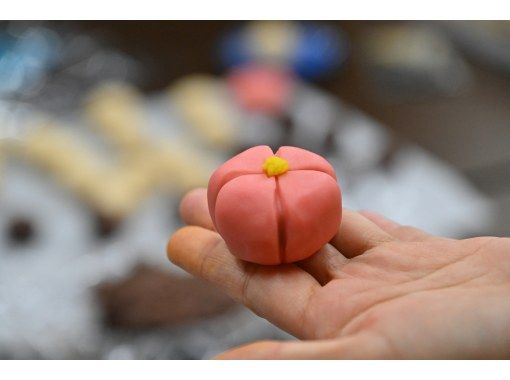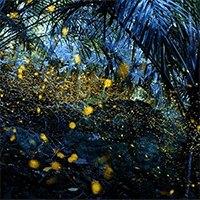【For Groups】 Osaka Castle/Kyoubashi/Eastern City in Cosplay photo shooting
- Age 6~Age 75
- 1~2 hours
- 10:00 / 11:00 / 12:00 / 13:00 / 14:00 / 15:00 / 16:00 / 17:00 / 18:00 / 19:00
【Preparation】Calligraphy is an aesthetic expression of Japanese culture. Before experiencing calligraphy, we will ask you to change into Japane【Explanation】First of all, we will explain about the mental attitude and tools.You will better understand the differences between foreign Caligraphy and Japanese "Shodo".The instructor will explain how to hold the brush and how to use the tools.Please choose your favorite Japanese Kanji character to try in this experience. 【Practice】Calligraphy has a sense of quietness and beauty. Essentially, it is important to have basic manners, such as sitting upright, keeping your back straight, and holding your brush upright. There are basic techniques such as "tome," "hane," and "harai," which should be practiced.Learn the stroke order of the chosen kanji.Learn by observing the teacher's demonstration with a model.Practice the kanji you have just selected with an awareness of the technique.【Special】Teachers have applied kanji to the foreign names of our clients and come up with Japanese-style names written in kanji.【Seisho】Participants will be asked to write their chosen kanji characters on a fan and a piece of calligraphy paper, keeping in mind what they have learned so far.
This was a great class. Kaori was a great teacher and we had plenty of time to practice our brush strokes before doing our final product. She also went through some of the history of writing styles. Great experience and would highly recommend this class. Kaori also premade some writings with our names before we got there on a small piece of wood and on paper in 3 different styles.
- Age 10~Age 70
- Within 1 hour
- 10:00 / 11:00 / 12:00 / 13:00 / 14:00 / 15:00 / 16:00 / 17:00 / 18:00 / 19:00 / 20:00 / 21:00
【Preparation】The Japanese sword is the most effective blade to date and can only be worn by Samurai. First, change into a Samurai costume (dogi and hakama) and become a Samurai.【Explanation of swords and Samurai manners】□The relationship between the Samurai and the Japanese sword.From an early age, he learned how to use a sword and was allowed to wear a serious sword belt at the age of 15. At that time, he becomes aware of his self-respect and the responsibility of carrying a deadly weapon.The sword is the soul of the samurai and cannot be sold, even if it starves to death.□Practicing the belt and the samurai's walk【Practice the basics with the iai practice sword】 □Learn and practice the basic stances of the sword□Swinging the sword from the stance□Battou and Nottou□Iaijutsu [Trial Slashing】□Try your hand at sword cutting with a real Japanese sword!Experience the world's best cutting performance.This time, you will try cutting a rolled straw.【Souvenirs】Please take home a piece of straw that you cut in a test cut as a souvenir.
- Age 6~Age 75
- 1~2 hours
- 10:00 / 12:00 / 14:00 / 16:00 / 18:00 / 20:00
-Tea CeremonyZen is alive and well in traditional Japanese culture, and by learning the tea ceremony, you will learn etiquette, manners, beautiful gestures, and the spirit of hospitality. who will be treated with hospitality.- You will be asked to serve tea to the guests with an awareness of the mindset and manners of the tea master.-CalligraphyZen exists as a visual trace. “hane,” and “harai” will be taught.-Choose a Japanese kanji of your choice and practice writing it according to the stroke order.-With what you have learned so far in mind, write your chosen kanji on the calligraphy paper.
- Age 6~Age 75
- 1~2 hours
- 10:00 / 12:00 / 14:00 / 16:00
-Wagashi is traditional Japanese confectionery that expresses the seasons. Wagashi is strongly characterized by colorful designs and beautiful craftsmanship, each created by hand by artisans.-Learn about the history and culture of JapanWagashi is a unique food to Japan and reflects the Japanese spirit of appreciating the four seasons, and it is said to have a beauty that is similar to that of wabi and sabi.- “They are too beautiful to eat.The first thing that strikes you when you are confronted with wagashi is how beautiful they look. They are filled with a delicate and gentle charm that is immediately recognizable as handmade, expressing the four seasons.-They reflect the Japanese people's love of the four seasons and their sense of beauty.Wagashi value the “seasons” ” so much that we cannot talk about them without mentioning spring, summer, fall, and winter, and express the seasons through three elements: appearance (design), ingredients used, and names.- “Delicious” is written as beautiful taste.First , enjoy it visually, then imagine from the name, weave a story, and enter the world of taste. Wagashi is not something that is just served and then taken in a snap.
最近チェックしたプラン
Please wait a moment
![[By Osaka Castle] Learning Zen of Japanese Beauty Calligraphy in kimonoの画像](https://img.activityjapan.com/10/52954/10000005295401_0NLp2Urf_3.jpeg?version=1735455605)
![[By Osaka Castle] Bushido Experience the Samurai Sword Cuttingの画像](https://img.activityjapan.com/10/57307/10000005730701_yvTwbz4o_3.jpg?version=1741677782)









